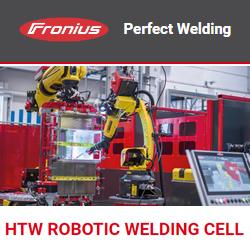What Does Digital Manufacturing Mean and How Can We Move Toward It?
Why Combining Your HMI & PLC Is the Smarter Move
How to Approach Make Vs. Buy Decisions for Optic Assembly
Applying ISA-95 in an Industry 4.0 world
Lessons to Learn from Intel's $20 Billion Manufacturing Investment
Overcome Automation Challenges to Create a Better Smart Factory
SafetyCulture Summit 2021: Made Extraordinary
PLM-Based Engineering
Micro Molding - Material Selection and Design Concerns
The challenges of mass customization in manufacturing
Rising Demand for EVs Will Disrupt Auto Manufacturing
Dialing Up Productivity with Workstream Collaboration
Continuous and Exacting Measurements Deliver New Levels of Quality Control
How to Use Supports
To Overcome Capacity Constraints, Industry 4.0 Implementations Must Follow These 3 Steps
Records 1036 to 1050 of 3070
First | Previous | Next | Last
Featured Product

Improve productivity and achieve consistent, high-quality welds with mechanized welding solutions.
Manufacturing and Automation - Featured Company

